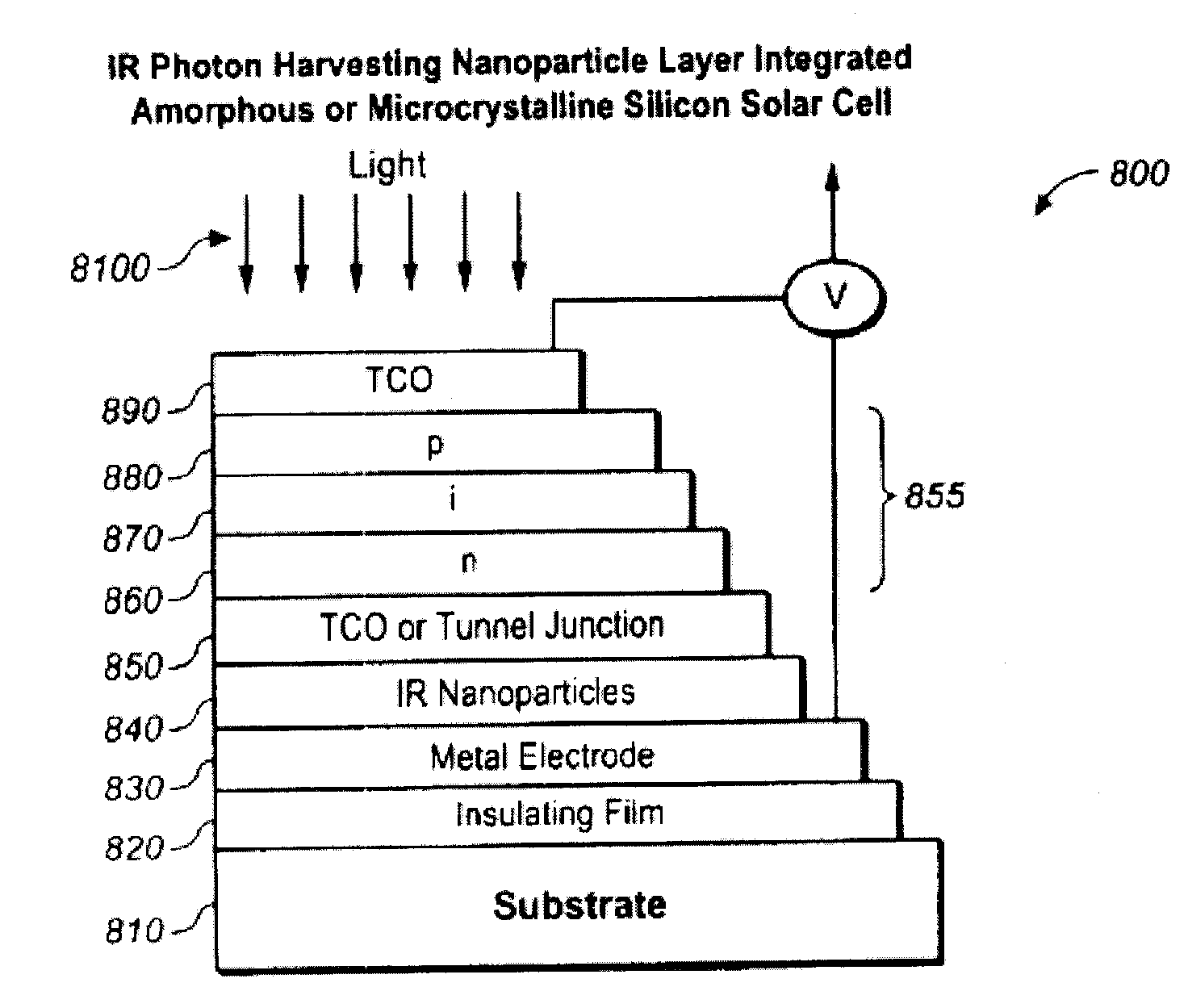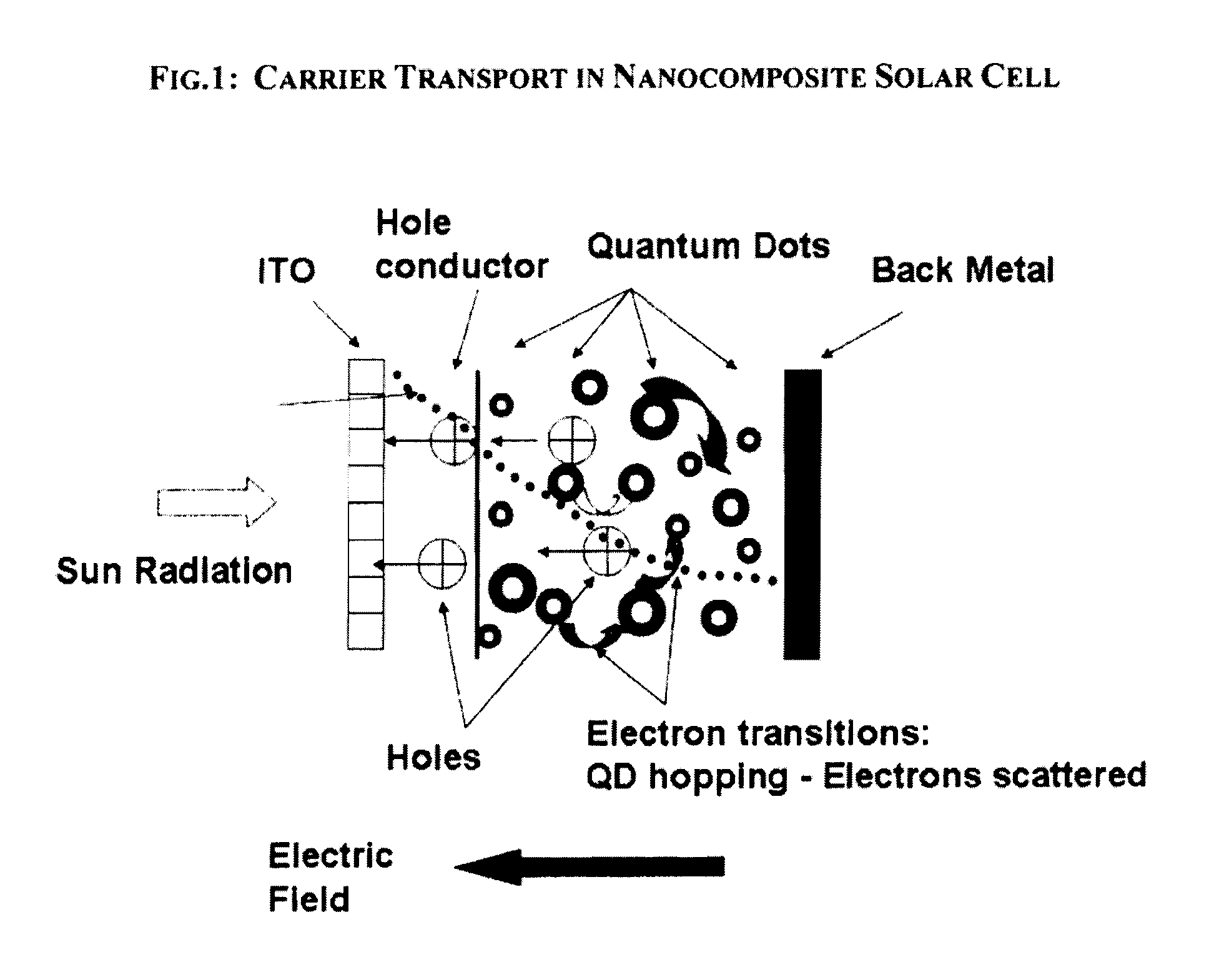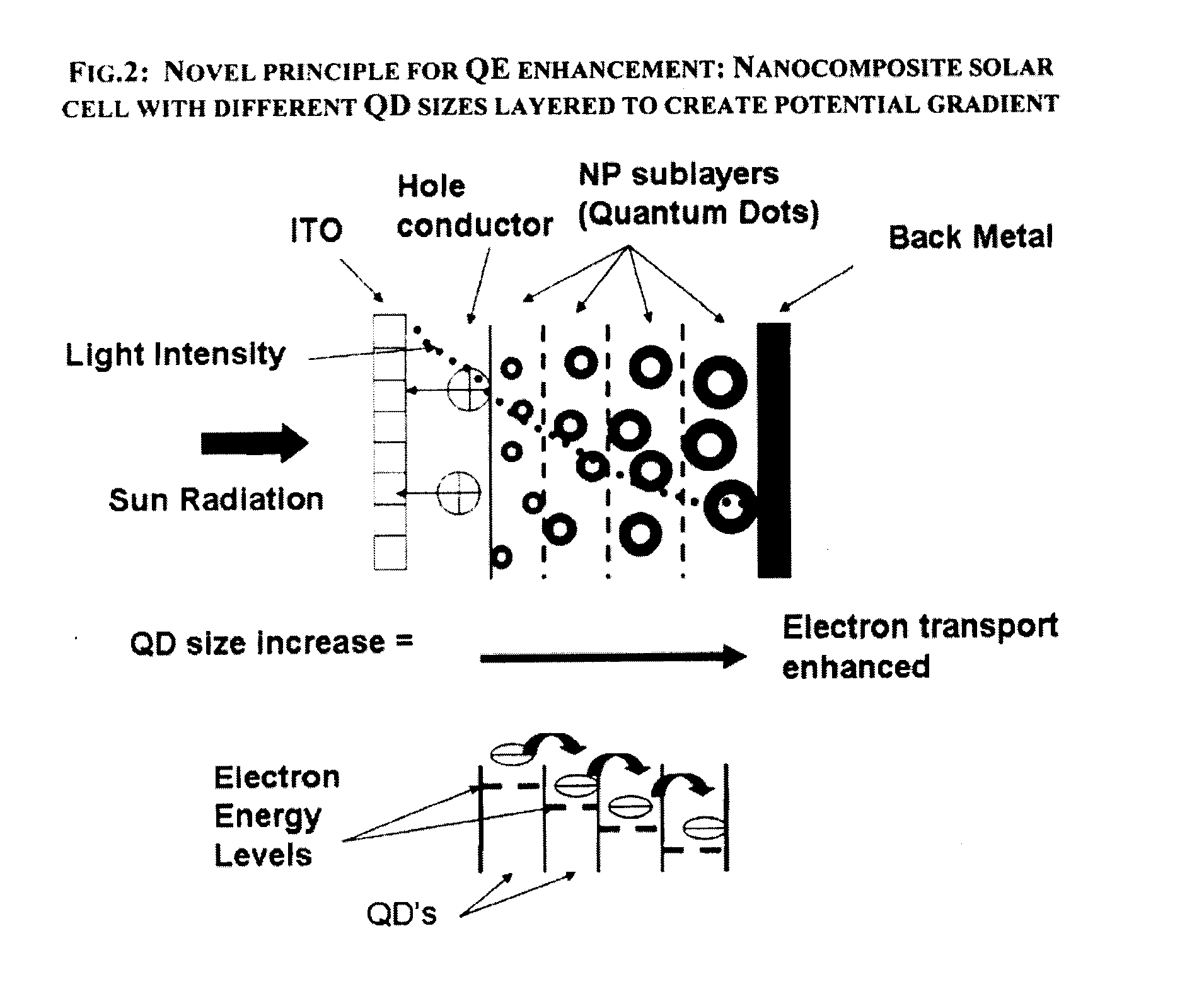Nanophotovoltaic Device with Improved Quantum Efficiency
a photovoltaic and quantum efficiency technology, applied in the field of photovoltaic devices, can solve the problems of high cost of silicon solar cells, inability to achieve significant cost reduction, and mature manufacturing,
- Summary
- Abstract
- Description
- Claims
- Application Information
AI Technical Summary
Benefits of technology
Problems solved by technology
Method used
Image
Examples
example 1
Preparation
[0090]In the embodiment shown in FIG. 4 the photoactive layer is a nanocomposite film with three sublayers of quantum dots and a hole conducting sublayer. The quantum dots in each of the sublayers have essentially the same size but have different compositions. The sublayers are arranged in such a way that the quantum dots with the largest bandgap are located closer to the first electrode while the quantum dots with smallest bandgap are located closer to the second electrode (the Back Metal region). The respective sub-layer thickness and the number of sub-layers depend on the total film thickness and the number of quantum dot material grades. For instance for the 150 nm thick nanocomposite film with different types of quantum dot materials, the approximate sub-layer thickness will be in the 25-30 nm range. The approximate light absorption trend is also shown in FIG. 4. Due to the different energy quantization in quantum dots of different size the longer wavelength absorpti...
example 2
[0091]In the embodiment shown in FIG. 3 the quantum dots in the nanocomposite film (photoactive layer) are made up of three elements, and the quantum dots are arranged such that the smallest quantum dots are located closer to the first electrode while the biggest quantum dots are located closer to the second electrode (the Back Metal region). The bandgap of the quantum dots also varies inversely with size (the smallest quantum dot has the largest bandgap). The respective sub-layer thickness and the number of sub-layers depend on the total nanocomposite film thickness and the number of types of quantum dots. For instance for the 150 nm thick nanocomposite film and nanoparticle size varying from 3 to 9 nm the approximate sub-layer thickness will be in the 15-25 nm range. The approximate light absorption trend is also shown in FIG. 3. Apparently due to the different energy quantization in quantum dots of different size the longer wavelength absorption is expected to shift toward the fa...
example 3
[0092]In the embodiment shown in FIG. 5 the quantum dots in the sublayers of the nanocomposite film (photoactive layer) are arranged such that the smallest quantum dots are located closer to the first electrode while the biggest quantum dots are located closer to the second electrode (the Back Metal region). The bandgap of the quantum dots also varies inversely with size (the smallest quantum dot has the largest bandgap). The different colors of the quantum dots in each level correspond to their different compositions. The respective sub-layer thickness and the number of sub-layers depend on the total nanocomposite film thickness and the number of types of quantum dots. For instance for the 150 nm thick nanocomposite film and nanoparticle size varying from 3 to 9 nm the approximate sub-layer thickness will be in the 15-25 nm range. The approximate light absorption trend is also shown in FIG. 3. Apparently due to the different energy quantization in quantum dots of different size the...
PUM
 Login to View More
Login to View More Abstract
Description
Claims
Application Information
 Login to View More
Login to View More - R&D
- Intellectual Property
- Life Sciences
- Materials
- Tech Scout
- Unparalleled Data Quality
- Higher Quality Content
- 60% Fewer Hallucinations
Browse by: Latest US Patents, China's latest patents, Technical Efficacy Thesaurus, Application Domain, Technology Topic, Popular Technical Reports.
© 2025 PatSnap. All rights reserved.Legal|Privacy policy|Modern Slavery Act Transparency Statement|Sitemap|About US| Contact US: help@patsnap.com



